Bio intensive gardening
veggiecanner
18 years ago
Featured Answer
Comments (56)
dchall_san_antonio
18 years agolast modified: 9 years agoveggiecanner
18 years agolast modified: 9 years agoRelated Discussions
INTENSIVE of French Intensive Gardening
Comments (9)While I do believe that French Intensive gardening (aka Jeavons, square-foot, etc.) does indeed have utility, I would have to disagree with alot of your conclusions. First of all, vegetable cultivation for human consumption is quite removed from some sort of pristine "natural" condition. It requires forced suppression of competing plants, manual cultivation of the soil, introduction of processed inputs (yes, even compost has been processed), irrigation, fertilization, genetic selection, pest suppression, etc. etc. My point being that if you were to buy a package of 100 vegetable seeds and plant them into just any old soil, I would hazard to say that less than 10 of them would survive to a viable harvest. And of those few, I would hazard to say that their nutritional and culinary value would be very low. There is a movement under foot lately that tries to equate vegetable gardening with some sort of Rousseau-esque state of nature. It is not. That vegetable on your plate has more to do with human labour than it does with a state of nature qua nature. Seen in this way, French intensive gardening is simply another system of getting plants to produce what we want, when we want it. As you say, [the French intensive makes use of] shade, sun, spacing, nutrients, beneficial insects, raised bed, square foot, permaculture, organic and more. There is really nothing natural about that. In a state of nature, the plants that survive are hardly suitable for human consumption because they are tough, woody, and tasteless. They have adapted to the natural state by putting their energy into survival and reproduction, whereas the vegetable and the human work together to have that energy directed into an edible fruit, root, leaf, etc. Is this just a philosophical distinction? Perhaps, but it does point to a glaring problem with the intensive system: it makes the plants conform to the system/plan rather than having the system/plan adapt to the plants. If you doubt me, simply take a look at Weaver and Bruner's root sketches for common vegetables. There is no way you can tell me sprawling vegetables like squash, cucumbers, tomatoes, etc. are best suited being crammed together with only a foot or so separating them. For the record, I do practice a semi-intensive system for my kitchen garden: lettuce, spinach, herbs, carrots, etc. But for my large "production" garden I find the intensive system to be a waste of time, energy and inputs. I still build wide, raised beds, ammended with organic inputs and very carefully cultivated and nurtured. The difference is that each plant is given the space required to grow to it's full development. This means less water and larger individual vegetables. It also means less time on my part, which is a very limited commodity. Here is a link that might be useful: Root diagrams...See MoreBio intensive gardening and Grass
Comments (9)Some mentally- and emotionally-twisted person came up with the idea that Bermuda would make a good lawn! Get your shovel, dig straight down inside the edge of the grass and make a hole. When you're down about two feet, stop. Get your hose and wash down the main-lawn side of the hole and look for roots. How deep do they go? That's how deep your barrier needs to be. Barrier choices: metal (if it rusts, it's temporary); landscape barrier (tiny root tips will work through it, it's temporary); very heavy-duty plastic (lasts a long time when protected from the sun, which it will be in this case). Using a flat-bladed shovel, dig straight down along your lawn edge, and at an angle from the garden side: Lawn l../garden side Lawn l./ garden side Lawn l/ garden side Lay your plastic on the angled side of the hole, leaving about a 6" flap above-ground. Backfill the hole. Lay the flap on top of the soil on the garden side, and place flat concrete 8x16" pavers on that flap all along the edge. When the roots hit the plastic, the angle will encourage them to go upward, rather than trying to force their way through the plastic. If they do grow along the top of the plastic (under the pavers), just lift the pavers and cut off. Reasonable vigilance is necessary. If part of the problem is the neighbor's unmowed grass seed blowing into your garden, use corn gluten meal as a pre-emergent. Research this, and find out what time is best for spreading it in your area -- you do have to get the timing right. The most economical sources are horse-type feed stores. Note: corn gluten meal and other pre-emergents will also prevent desirable seeds (flowers, vegetables) from sprouting, so you will probably have to start plants in flats or pots and then plant them as seedlings (no longer affected by the pre-emergent). And thank you, people of the Bamboo Forum, for the solution to this problem! It works just fine! Sue, in Running Grass Central...See MoreCover crops in cold Canada
Comments (3)Thank you for the responses and info. Gardengal48, thanks for raising the matter of my hardiness zone: I checked again and while some sources do locate my region in hardiness zone 5b, most actually say 5a. Changed it in my profile, thank you. I will definitely look at both your recommendations and order seeds to be ready mid august. I did a bit of research and found that hairy vetch looks like a great great option for me as my soil is quite sandy and vetch seems to thrive in that kind of soil. Thanks again!...See MoreJen's Asparagus Question
Comments (2)Jen, Pat Lanza has written two excellent books on lasagna gardening. I have them both and they are great. Just to be clear, double-digging the ground before you build a lasagna bed is not part of lasgna gardening. It is really part of bio-intensive gardening, which involves loosening the soil deeply and enriching it with amendments in order to get the best crop possible. I suggested double-digging because, if you do it right, you will only have to build and plant an asparagus bed once. The double digging would remove any grass roots that could cause problems later. You can google both lasagna gardening and double-digging to get detailed instructions on how to do both. You may elect to use one method, both, or neither. Just remember, the key to a successful asparagus planting is proper soil preparation followed up by eternal vigilance to keep the grass out. Dawn...See MorejanetLA
18 years agolast modified: 9 years agokris
18 years agolast modified: 9 years agoorganica
18 years agolast modified: 9 years agousername_5
18 years agolast modified: 9 years agoswanz
18 years agolast modified: 9 years agogarnetmoth
18 years agolast modified: 9 years agomountain_curmudgeon
18 years agolast modified: 9 years agoorganica
18 years agolast modified: 9 years agotherainfallsup
18 years agolast modified: 9 years agomountain_curmudgeon
18 years agolast modified: 9 years agoveggiecanner
18 years agolast modified: 9 years agoorganica
18 years agolast modified: 9 years agoswanz
18 years agolast modified: 9 years agoveggiecanner
18 years agolast modified: 9 years agomountain_curmudgeon
18 years agolast modified: 9 years agomountain_curmudgeon
18 years agolast modified: 9 years agogarnetmoth
18 years agolast modified: 9 years agojcin_los_angeles
18 years agolast modified: 9 years agotherainfallsup
18 years agolast modified: 9 years agocarolb_w_fl_coastal_9b
18 years agolast modified: 9 years agomountain_curmudgeon
18 years agolast modified: 9 years agoorganica
18 years agolast modified: 9 years agoKimmsr
18 years agolast modified: 9 years agokris
18 years agolast modified: 9 years agoJamesY40
18 years agolast modified: 9 years agomountain_curmudgeon
18 years agolast modified: 9 years agoreptilegrrl
18 years agolast modified: 9 years agopnbrown
18 years agolast modified: 9 years agogarnetmoth
18 years agolast modified: 9 years agoled_zep_rules
18 years agolast modified: 9 years agogarnetmoth
18 years agolast modified: 9 years agousername_5
18 years agolast modified: 9 years agoveggiecanner
18 years agolast modified: 9 years agolou_spicewood_tx
18 years agolast modified: 9 years agousername_5
18 years agolast modified: 9 years agolou_spicewood_tx
18 years agolast modified: 9 years agousername_5
18 years agolast modified: 9 years agousername_5
18 years agolast modified: 9 years agoveggiecanner
18 years agolast modified: 9 years agousername_5
18 years agolast modified: 9 years agokris
18 years agolast modified: 9 years agousername_5
18 years agolast modified: 9 years agokris
18 years agolast modified: 9 years agoorganica
18 years agolast modified: 9 years agoled_zep_rules
18 years agolast modified: 9 years agomountain_curmudgeon
18 years agolast modified: 9 years agomountain_curmudgeon
18 years agolast modified: 9 years ago
Related Stories

PLANTING IDEASGreat Garden Combo: 5 High-Intensity Plants for High-Intensity Sun
Blend bold foliage and flowers to create a powerful combination that will hold its own even in the harsh light of midsummer
Full Story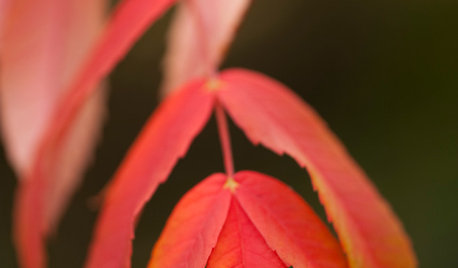
GARDENING GUIDESGreat Design Plant: Rhus Glabra
Smooth sumac provides powerful jolts of fall color and persistent fruit clusters that add interest through the winter
Full Story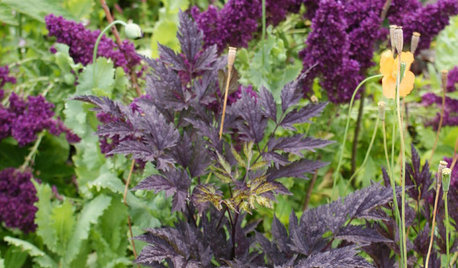
PURPLE FOLIAGEGreat Design Plant: Autumn Snakeroot
Venture fearlessly into the dark with this striking almost-black plant that brings a dramatic mood to the garden
Full Story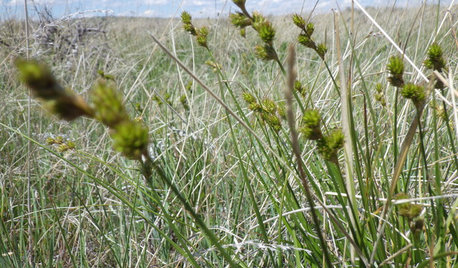
GARDENING GUIDESGreat Design Plant: Carex Brevior
This mounding sedge native to many U.S. states is tough as nails and can replace the traditional lawn in low-traffic areas
Full Story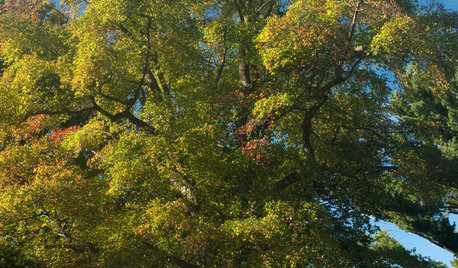
TREESGreat Design Plant: Nyssa Sylvatica
The black gum tree tolerates moist soil and provides many years of beautiful foliage, from summer to fall
Full Story
FRONT YARD IDEAS10 Ideas for a Front-Yard Edible Garden Your Neighbors Will Love
Choosing attractive, well-mannered plants and sharing the bounty will go a long way toward keeping the peace
Full Story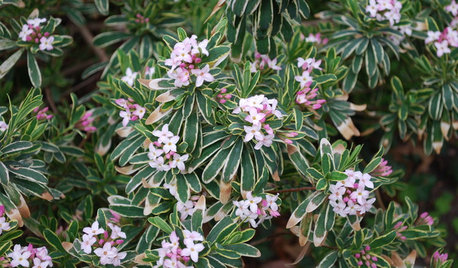
FLOWERSGreat Design Plant: Carol Mackie Daphne
With a sweet, strong fragrance and white flowers that fade to pink, this garden standout has feminine wiles to match its name
Full Story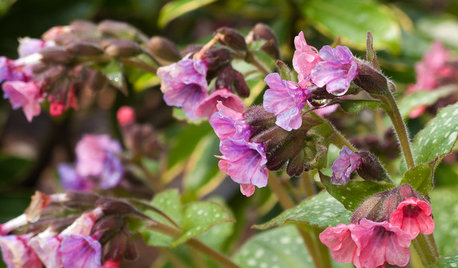
GARDENING FOR BUTTERFLIESGreat Design Plant: Lungwort
Yes, the name is unfortunate. But the flowers and foliage are delightful, and this perennial is easy to grow and shunned by deer
Full Story
GROUND COVERSNative Alternatives to English Ivy, Japanese Pachysandra and Periwinkle
These shade-loving ground covers are good for the environment and say something about where you are
Full Story
GARDENING GUIDESGreat Design Plant: Sambucus Nigra
Common elderberry is a highly adaptable shrub from the eastern U.S., with berries galore for wildlife and humans alike
Full Story



veggiecannerOriginal Author